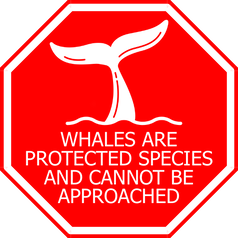
EXPERIENCE > YOUTH ACTIVITIES > CITIZEN SCIENCE
Although orcas (sometimes known as “killer whales”) are native to Oregon’s coastal waters, where they are during certain times of the year is still a mystery to biologists. To help understand these highly-intelligent and endangered animals, the National Oceanic and Atmospheric Association (NOAA) is asking for assistance from citizen-scientists by organizing an Orca spotting network. If you’re on the Oregon Coast and happen to spot an orca — whether it be an individual or a family group called a “pod” — NOAA asks you to do the following:
After making your notes (or taking photos or video), contact the reporting line at 1-866-672-2638. In you’re under 18, you should first ask for permission from your parent or guardian before filing a report. Be prepared to leave your full name and contact information with the reporting line operator.
You can find additional information about safely encountering orcas on the Be Whale Wise website.
Although orcas (sometimes known as “killer whales”) are native to Oregon’s coastal waters, where they are during certain times of the year is still a mystery to biologists. To help understand these highly-intelligent and endangered animals, the National Oceanic and Atmospheric Association (NOAA) is asking for assistance from citizen-scientists by organizing an Orca spotting network. If you’re on the Oregon Coast and happen to spot an orca — whether it be an individual or a family group called a “pod” — NOAA asks you to do the following:
- Note the time, date and location of the sighting.
- Count the total number of orcas. If possible, note how many of the whales were adult males (will have a very tall dorsal fin) and how many were adult females or juveniles (a shorter dorsal fin.) If you noticed any calves (very young orcas) in the pod, count them too if possible.
- Look carefully for identifying marks, such as scars or notches in the dorsal fins. An orca’s body coloring is as unique as human fingerprints, so if you’re lucky enough to notice any unusual markings this will help scientists identify individuals.
- Note what direction the orcas were moving.
- What activities did the orcas appear to be engaged in? Were they hunting? Playing? Leaping out of the water (breeching) or raising their heads out of the water to look at the environment around them (spy hopping)?
After making your notes (or taking photos or video), contact the reporting line at 1-866-672-2638. In you’re under 18, you should first ask for permission from your parent or guardian before filing a report. Be prepared to leave your full name and contact information with the reporting line operator.
You can find additional information about safely encountering orcas on the Be Whale Wise website.
Features Related to Orcas:
Let’s Speak Orca – Common Whale Behaviors You Can Spot At The Water’s Surface: Cetaceans (whales and dolphins) have a highly sophisticated language which consists of sounds and behaviors. Download this illustrated guide to help interpret what they're "saying."
That Time When An Orca Lived Here: Remembering Keiko, the Oregon Coast Aquarium's most famous resident.
Whales, Dolphins and Porpoises of Oregon: Learn about the cetaceans who call Oregon waters home and download a colorful species guide.
Whale Watching Spoken Here: This program helps thousands of visitors to the Oregon Coast enjoy the beauty of gray whales as they slowly migrate off shore. Three Oceanscape Network Youth Correspondents profile this program administered by the Oregon State Parks.
That Time When An Orca Lived Here: Remembering Keiko, the Oregon Coast Aquarium's most famous resident.
Whales, Dolphins and Porpoises of Oregon: Learn about the cetaceans who call Oregon waters home and download a colorful species guide.
Whale Watching Spoken Here: This program helps thousands of visitors to the Oregon Coast enjoy the beauty of gray whales as they slowly migrate off shore. Three Oceanscape Network Youth Correspondents profile this program administered by the Oregon State Parks.




